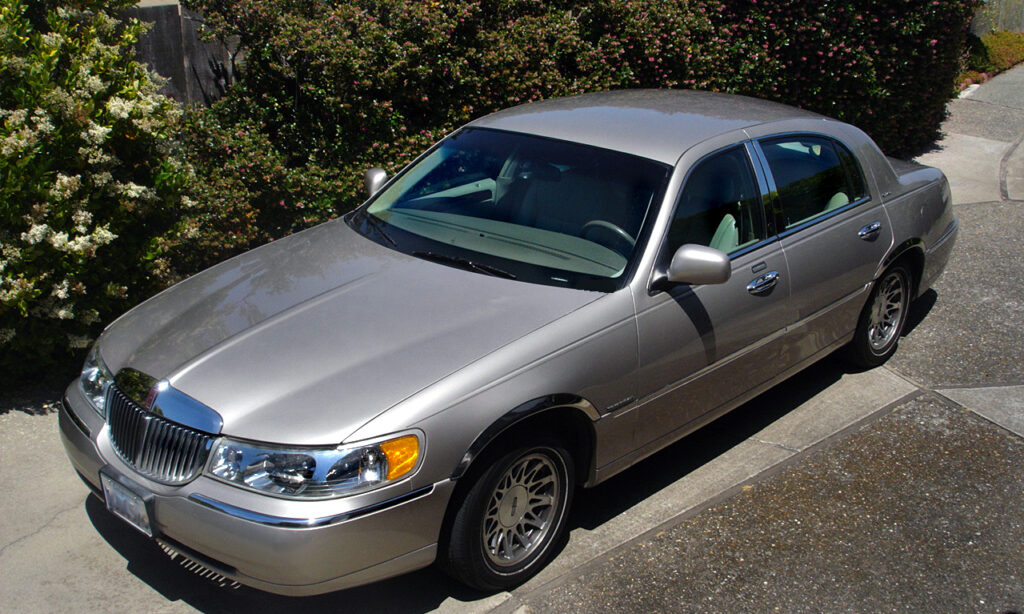
In an increasingly connected world, the vehicles we drive, especially those under a subscription model or equipped with modern tracking devices, are far more intelligent than most of us realize. Gone are the days when a car was simply a means of transport; today, it’s a sophisticated data-gathering machine, silently logging an astonishing array of information about its movements and our driving habits. While these capabilities are often marketed for safety, security, or efficiency, they also represent a pervasive form of quiet surveillance that fundamentally reshapes our privacy expectations on the road.
From pinpointing your exact location every few seconds to recording detailed historical routes, the depth of this tracking is truly remarkable. These systems are designed not just for businesses managing large fleets, but increasingly for individual vehicle owners, often bundled into services or discreetly integrated into the vehicle itself. They promise peace of mind for parents monitoring teen drivers or reassurance for owners concerned about theft, yet the sheer volume and granularity of data being collected raise important questions about who has access to it and how it might be used.
So, how exactly are these car subscription services, or the underlying tracking technologies they leverage, keeping such a close watch? We’ve delved into the specifics of various GPS tracking devices and the broader mechanisms they employ to uncover the myriad ways your vehicle’s location and operational data are being meticulously observed. Prepare to discover the often-overlooked features that ensure an almost constant digital tether to your car, beginning with the most fundamental aspect of all: its whereabouts.

1. **Real-Time, High-Frequency Location Updates**Perhaps the most fundamental aspect of modern vehicle tracking is the ability to monitor a car’s location in real-time, with incredible precision and speed. This isn’t just about knowing what street a vehicle is on; it’s about knowing its exact coordinates, often updated several times within a single minute. Devices like the GPSit 1000BZL exemplify this, delivering location data every 10 seconds, a significant leap from older, slower trackers that might refresh only once per minute or even less frequently.
This rapid refresh rate is crucial because it transforms intermittent pings into a continuous, flowing narrative of movement. When a device provides updates every 3 to 10 seconds, it means that almost every turn, every stop, and every acceleration can be precisely captured as it happens. For fleet managers, this allows for immediate route optimization and responsive management, but for individual drivers, it means an exceptionally detailed log of every moment spent behind the wheel is being created, live.
The implications of such high-frequency tracking are far-reaching. It means that whether you are simply driving to the grocery store or embarking on a cross-country journey, your precise path is being meticulously recorded second-by-second. This continuous stream of data leaves very little room for ambiguity about a vehicle’s current position, making it an incredibly powerful tool for anyone seeking to maintain constant surveillance over a vehicle and, by extension, its occupants.

2. **Detailed Trip & Route History Logging**Beyond just seeing where a vehicle is *right now*, these tracking systems excel at compiling an exhaustive historical record of every journey undertaken. Think of it as a digital travel diary, meticulously saving every detail. The GPSit 1000BZL, for example, utilizes its 10-second interval data to provide accurate reports on turns, trips, stops, and even speed records, creating a comprehensive narrative of the vehicle’s activity over time. This functionality isn’t just for current monitoring; it builds a rich archive.
This historical data logging means that even long after a trip has concluded, the entire route can be reconstructed with remarkable accuracy. This includes where the vehicle started, every single stop it made along the way, how fast it traveled at different points, and precisely when it reached its final destination. Such detailed logs are invaluable for businesses requiring mileage reports, verifying routes, or reviewing driver behavior retrospectively, but they also serve as a complete digital blueprint of an individual’s movements.
This capability extends to devices that use passive GPS tracking, where data is quietly recorded into the tracker’s internal memory. While not immediately transmitted, this stored information — including exact location, date, time, speed, and direction of travel — can be downloaded and analyzed later. This retrospective capability means that even if a tracker isn’t constantly transmitting, it’s still building a detailed dossier of every journey, providing a thorough, time-stamped account of a vehicle’s life on the road.
Read more about: Signal Lost? Expert Tips and Apps for Seamless Offline Navigation on Your Next Road Trip

3. **Geofencing for Boundary Monitoring**Geofencing introduces a virtual layer of surveillance, allowing trackers to define and monitor specific geographic boundaries. Essentially, it creates an invisible perimeter around a designated area, and the system is configured to send automated alerts whenever a vehicle enters or exits this pre-set zone. This feature transforms passive tracking into active alert generation, turning specified locations into digital tripwires that immediately flag activity.
Devices like the GPSit 1000BZL provide “complete access to records of your vehicle’s status and geofence breaches,” meaning not only are you notified in real-time, but a permanent record of these events is also maintained. Similarly, the Invoxia GPS Tracker offers “customizable alerts for unusual movement… and entry/exit from geofenced zones,” highlighting its utility for both security and oversight. Vyncs Pro also integrates geofencing, ensuring users are always aware when their vehicle crosses a designated virtual barrier.
For businesses, geofencing is a powerful tool for ensuring fleet vehicles stay within designated service areas or for alerting when assets enter or leave a yard. For individuals, it can be used to monitor whether a teen driver has stayed within approved limits or if a family member has arrived at a specific location. However, this also means that any predetermined location, whether a home, workplace, or even a sensitive area, can be digitally walled off, triggering an alert if the vehicle crosses the line, thereby providing precise notification of its presence or absence from key zones.
Read more about: Navigating the Future: 2025’s Top Self-Driving Cars and the Tech Powering Autonomous Innovation

4. **Speed and Driving Behavior Analytics**Beyond simply knowing where a vehicle is, modern tracking systems delve deeply into *how* it’s being driven, analyzing a range of behaviors that paint a comprehensive picture of driver performance. This level of detail goes far beyond basic speed limits, extending into habits like rapid acceleration, harsh braking, and prolonged idling. As one Amazon reviewer, Michael Cavenaugh, noted about a tracker, it “provides way too much information. This is designed for truck fleets with vehicle assignments and a detailed history of everything a driver does, including speed, stops, rapid acceleration, etc.”
This granular data is particularly useful for monitoring teen drivers or employees on the job, offering invaluable insights into safety and efficiency. The context explicitly states that speed alerts are “perfect for monitoring teen drivers or employees on the job,” allowing parents or employers to set specific thresholds and receive notifications if they are exceeded. This means that a driver’s adherence to speed limits, and even their general temperament behind the wheel, can be actively assessed and recorded.
Vyncs Pro, for instance, provides “detailed tracking features for location, speed, and driving behavior,” giving users a multi-faceted view of vehicle operation. Even passive GPS trackers, once their data is downloaded, can generate “Speed and stop reports (great for monitoring drivers).” This focus on behavioral analytics allows those with access to the data to not only know where a vehicle has been but also to understand the quality of the driving, providing a powerful layer of oversight into how the vehicle is being operated.
Read more about: Unlocking Dealership Gold: 15 Proven Strategies Car Dealers Use to Maximize Profit on Every Sale and Secure Their Future

5. **Tamper and Disconnection Alerts**Recognizing the potential for tracking devices to be intentionally disabled, many modern systems are equipped with sophisticated tamper and disconnection alerts. These features are designed to notify the monitoring party immediately if someone attempts to remove, disconnect, or otherwise interfere with the tracker itself. This ensures continuous visibility even when efforts are made to evade surveillance, adding a critical layer of security and resilience to the tracking process.
The GPSit 1000BZL explicitly highlights this capability: “If the unit is unplugged or tampered with, the built-in backup battery kicks in and immediately sends an alert.” This mechanism is vital because it means that even if the device is removed from the vehicle’s primary power supply, the tracker continues to function on its own power, silently notifying the owner of the interference. This anti-theft safeguard provides peace of mind that a deliberate attempt to hide the vehicle’s location won’t go unnoticed.
Similarly, the Invoxia GPS Tracker includes “theft attempts (vibration detection)” as part of its “Smart Security Alerts,” indicating that even subtle disturbances to the device or vehicle can trigger a notification. The general “Extra Features” section for no-monthly-fee trackers also lists “Tamper or Movement Alerts: Know instantly if someone tries to remove or move your tracker.” These alerts are a clear indication that the tracking ecosystem is designed to be robust against interference, ensuring that any effort to disable the surveillance will likely be recorded and reported.

6. **Multi-Network Triangulation (GPS, Wi-Fi, Bluetooth)**While traditional GPS relies on satellites for outdoor positioning, modern trackers often employ a hybrid approach to enhance accuracy and extend coverage, particularly in environments where satellite signals might be weak or unavailable. This involves leveraging multiple networks, including Wi-Fi and Bluetooth, alongside GPS, to achieve more precise and reliable location data. This multi-network triangulation is a significant step beyond basic satellite-only tracking, addressing common blind spots.
The Invoxia GPS Tracker is a prime example of this advanced capability, as it “combines GPS, LTE-M, and even Wi-Fi/Bluetooth triangulation.” This sophisticated blending of technologies ensures that tracking remains robust in a wider variety of scenarios. For instance, while GPS excels outdoors, Wi-Fi and Bluetooth signals can be particularly effective indoors or in dense urban areas where satellite visibility is obstructed.
This hybrid approach means that a vehicle can still be reliably tracked even when it’s parked in a multi-story garage, stored in a warehouse, or located within an apartment building where a direct line of sight to GPS satellites is impossible. By triangulating signals from nearby Wi-Fi hotspots or Bluetooth devices, these trackers can pinpoint a location with surprising accuracy, ensuring that the vehicle’s whereabouts are rarely a mystery, regardless of its environment.

7. **Vehicle Health and Diagnostic Monitoring (OBD-II)**Some advanced tracking systems go far beyond mere location data, tapping directly into a vehicle’s onboard diagnostic (OBD-II) port to extract a wealth of mechanical and operational information. This means that in addition to knowing where your car is, these services can also tell you about its internal state, often providing a much more comprehensive picture of its usage and potential issues. This transforms a simple tracker into a full-fledged vehicle health monitor.
Vyncs Pro is a leading example of this, offering “Vehicle Health Monitoring: Includes diagnostics, fuel economy, maintenance alerts, and tamper alert.” This device connects directly to the OBD-II port, allowing it to collect data that indicates the health of various car systems. Donna Humphreys, a user, praised its alert system for mechanical issues, stating it helped prevent major repairs, underscoring the practical utility of this diagnostic capability beyond just tracking location.
This integration means that details like fuel levels, engine fault codes, and even maintenance reminders can be monitored remotely. The ability to track “vehicle diagnostics, geofence alerts, fuel level tracking” provides an unparalleled level of insight for fleet managers or concerned car owners. It creates a detailed profile not just of where the vehicle travels, but also of its mechanical well-being, potentially revealing patterns of stress or neglect that go hand-in-hand with how it’s being driven. This deep dive into vehicle internals is another powerful way services can quietly gather extensive data about your car’s life.
Read more about: Decode Your Car’s Emissions Test Failure: The 11 Most Common Reasons and How to Fix Them

8. **Passive Data Logging for Later Retrieval**While many tracking systems boast real-time updates, an equally pervasive, though less immediately obvious, method of surveillance involves passive data logging. Unlike always-on, cellular-based devices that transmit live updates, passive GPS trackers quietly record every movement in the background. Think of it as a digital travel diary for your vehicle or equipment, meticulously saving the entire journey for review at a later time. The significant appeal of this method, often touted as a “no monthly fee” solution, stems from its independence from continuous cellular connectivity.
This form of tracking operates by diligently listening to GPS satellites. Every few seconds or minutes, depending on its configuration, the device records critical information such as the exact location (latitude and longitude), the precise date and time of the reading, and the vehicle’s speed and direction of travel. All this valuable data is stored internally within the tracker’s memory, much like how a digital camera stores photos on an SD card. Crucially, because no cellular networks are involved in this ongoing data collection, there’s no need for an expensive, recurring subscription fee.
Herein lies the fundamental difference from real-time devices: the data isn’t automatically sent to your phone or a web platform. Instead, you’ll need to manually retrieve the device after a journey has concluded. Once the device is in hand, the next step involves connecting it to a computer, typically via a USB cable or a similar connection. Upon connection, the tracker behaves like a storage drive, allowing you to easily download the saved travel data. Some more modern trackers might even offer Bluetooth or Wi-Fi for wireless transfer, but USB remains the most common and reliable method.
Once the data is transferred, the real value of passive tracking becomes apparent during the data analysis phase. Using the manufacturer’s software or a compatible application, you can upload the recorded data and visualize the full journey, laid out clearly on a map. These analytical tools often include features such as detailed speed and stop reports, which are invaluable for monitoring drivers, along with time-stamped events like exact arrival and departure times. If the device was configured with geofence zones, it can even generate geofence breach reports. This comprehensive data allows for saving or printing reports for record-keeping, proving incredibly handy for businesses needing mileage reports, verifying routes, or for individuals reviewing driving behavior without the burden of ongoing bills.

9. **Motion and Tilt Detection for Security**Beyond simply knowing a vehicle’s location, advanced tracking systems incorporate sophisticated motion and tilt detection capabilities, serving as an active security layer. These features are designed to detect physical disturbances to the vehicle or the tracking device itself, immediately alerting the owner to unusual movements or potential theft attempts. This transforms passive monitoring into proactive security, providing a crucial early warning system against unauthorized activity.
The Invoxia GPS Tracker, for instance, explicitly highlights these capabilities within its “Smart Security Alerts.” It offers customizable alerts for “unusual movement” and, more specifically, “theft attempts (vibration detection).” This means that even subtle jostling, an attempt to tow the vehicle, or someone trying to physically interfere with the tracker can trigger an instant notification. Such granular sensitivity ensures that potential threats are not merely recorded, but actively flagged for immediate attention.
Similarly, other devices like the GPSit 1000BZL are built with a “tamper-resistant design” and come equipped with a mechanism to send an immediate alert if the unit is “unplugged or tampered with.” The general “Extra Features” list for various no-monthly-fee trackers also includes “Tamper or Movement Alerts,” which are designed to instantly inform you if someone tries to remove or move your tracker. These features collectively create a robust defense against attempts to disable or evade surveillance.
The implications of such granular motion and tilt detection are profound for vehicle security. It means that a slight nudge, an attempt to break into the car, or even someone attempting to dislodge the tracking unit itself will likely trigger a notification. This provides a crucial layer of active security that goes beyond mere geographical tracking, offering owners enhanced peace of mind by allowing them to react swiftly to potential threats or interference with their tracked assets. These systems are clearly engineered to be resilient against deliberate efforts to compromise their functionality.
Read more about: Staying Power: 11 Home Security Cameras Built to Last, Delivering Peace of Mind Year After Year

10. **Remote Access via Mobile Apps and Web Platforms**In our digitally-driven world, the true power of vehicle tracking is unlocked through intuitive and accessible user interfaces. Mobile applications and web-based platforms serve as the indispensable digital dashboards that allow users to interact with, visualize, and manage the vast amounts of data collected by these tracking devices. Without these interfaces, the raw location and operational data would remain largely inaccessible and uninterpretable to the average user, making remote surveillance practical and convenient.
Many prominent tracking services offer robust app and web access as a core feature. Vyncs Pro, for example, emphasizes its “App and web access” for seamless monitoring. The GPSit 1000BZL’s premium services grant users “complete access to records of your vehicle’s status and geofence breaches” through its platform. Even devices like the LandAirSea 54, known for its discreet tracking, provide “App, website access, location sharing feature,” underscoring the universal need for a user-friendly portal to tracking data.
These platforms offer far more than just a dot on a map. They are comprehensive control centers where users can monitor vehicles in real-time, delve into extensive “historical playback” of past trips, and effortlessly set up or modify custom alerts for everything from speed violations to geofence breaches. This level of remote access ensures that whether you’re managing a fleet of vehicles from your office or checking on a family member’s journey from your smartphone, the entire surveillance ecosystem is literally at your fingertips, making constant oversight incredibly convenient and immediate.
While the goal is always intuitive design, there can occasionally be an “App Learning Curve,” as noted for the Invoxia GPS Tracker, where some users found the mobile app “cluttered or unintuitive.” However, the overarching trend within the industry is towards simplifying complex technological concepts into digestible, easy-to-understand interfaces. This focus on accessibility ensures that even the most advanced tracking features are readily available to a broad audience, empowering users with comprehensive control over their vehicle’s data and movement.
Read more about: Unlocking Peace of Mind: 14 Top Apps to Discreetly Track Your Family’s Location for Ultimate Safety

11. **Backup Power for Continuous Tracking**One of the most critical, yet often overlooked, elements ensuring the integrity of vehicle tracking is the provision of backup power. The ability for a device to operate independently of the vehicle’s primary electrical system is paramount for uninterrupted surveillance, especially in scenarios where the main power supply might be deliberately disconnected or fail. This feature acts as a vital safeguard, preventing tracking gaps and bolstering security against potential tampering or unforeseen electrical issues.
Many sophisticated trackers are designed with this contingency in mind. The GPSit 1000BZL, a device built for rigorous fleet management, prominently features a “built-in backup battery” that springs into action if the unit is “unplugged or tampered with.” Crucially, it doesn’t just switch power sources; it “immediately sends an alert,” notifying the monitoring party of the interference. This dual functionality — continuous tracking coupled with an instant alert — provides robust anti-theft protection and ensures visibility is maintained even under duress.
Portable tracking devices, by their very nature, rely heavily on internal power sources, and many are engineered for impressive longevity. The Invoxia GPS Tracker, for example, boasts a “Long Battery Life,” capable of lasting “anywhere from several weeks to up to 6 months on a single charge,” depending on the update frequency. Such extended battery performance allows for discreet, long-term tracking without the constant need for recharging, making it an ideal choice for assets that may not always be connected to a vehicle’s power.
Even robust trackers like the LandAirSea 54 offer significant operational independence, with a rechargeable battery life ranging from “1-3 weeks regular” use to an astonishing “6 months in low power mode.” This dedication to maintaining continuous power, whether through integrated backup batteries or extended internal power cells, clearly underscores the industry’s commitment to uninterrupted tracking. It signifies that vehicle surveillance systems are built to be resilient, making it exceedingly difficult for any vehicle, and by extension its occupants, to simply vanish from the digital tether.
Read more about: 10 Unexpected Ways Your New Car Insurance Policy Can Beat Your Old One’s Price

12. **Monitoring Arrival and Departure Times**Beyond simply knowing a vehicle’s general location, modern tracking systems excel at pinpointing the exact timestamps for every movement, providing granular data on arrival and departure times. This level of precision transforms a basic location dot into a comprehensive, time-stamped log of a vehicle’s entire operational lifecycle, offering invaluable insights for logistics, accountability, and behavioral analysis.
Devices engineered for high-frequency data capture, such as the GPSit 1000BZL, provide their location updates at “10-second intervals.” This rapid refresh rate inherently captures precise timings for “turns, trips, [and] stops.” Each recorded event is not merely a geographical coordinate but is meticulously time-stamped, allowing for an incredibly accurate reconstruction of when a vehicle began a journey, paused, and ultimately arrived at its destination.
The mechanics of passive GPS tracking also highlight this capability. When the data from a passive tracker is downloaded and analyzed, the software routinely generates reports with “Time-stamped events like arrival and departure.” This universal feature across different tracking methodologies underscores the fundamental importance of knowing not just *where* a vehicle was, but *exactly when* it was there, and for how long.
For fleet managers, parents monitoring teen drivers, or individuals concerned about vehicle misuse, this precision is gold. It allows for the verification of schedules, the assessment of punctuality, and the confirmation of whether a vehicle adhered to a planned route within specified timeframes. This unassailable timeline of movements removes all ambiguity, creating a detailed digital ledger of every moment a vehicle is in operation, quietly documenting its every coming and going.
Read more about: Unlock Your 2025 Adventures: 15 Essential Budget Travel Hacks for Savvy Explorers

13. **Detection of Rapid Acceleration/Braking**Modern vehicle tracking delves far deeper than just location and speed, venturing into the realm of granular driving behavior. This includes the subtle, yet highly revealing, detection of rapid acceleration and harsh braking events. These insights provide a nuanced understanding of driver performance and safety habits, painting a comprehensive picture of how a vehicle is being operated, rather than just where it’s going.
As highlighted in the broader discussion on “Speed and Driving Behavior Analytics,” advanced tracking systems meticulously analyze a range of behaviors that constitute a driver’s unique operating style. This level of detail extends significantly beyond merely flagging if a speed limit was exceeded. It zeroes in on aggressive driving tendencies such as abrupt starts and sudden stops, alongside other metrics like prolonged idling, all contributing to a full profile of vehicle usage and potential wear.
An Amazon reviewer, Michael Cavenaugh, encapsulated the detail of these systems when he noted that a tracker “provides way too much information.” He elaborated that it’s “designed for truck fleets with vehicle assignments and a detailed history of everything a driver does, including speed, stops, rapid acceleration, etc.” This candid observation underscores the depth of data collection, revealing that even seemingly minor driving actions are meticulously logged and available for review, painting an undeniably intrusive portrait of driver behavior.
Vyncs Pro, a prominent OBD-II based tracker, is a prime example of a device offering these comprehensive insights. It provides “detailed tracking features for location, speed, and driving behavior,” allowing users to monitor not only where the car is, but also the quality and temperament of the driving itself. By capturing instances of rapid acceleration or hard braking, these systems offer a powerful layer of oversight, enabling assessments of driving safety, fuel efficiency, and overall vehicle handling, all while quietly tethering the driver to a digital performance review.
Read more about: Navigating the Future: 2025’s Top Self-Driving Cars and the Tech Powering Autonomous Innovation
It’s clear that the vehicles we increasingly rely on are far more than just modes of transportation; they are sophisticated data collection platforms, quietly, yet relentlessly, gathering an astonishing amount of information about our every move and habit. From the discrete logging of every journey to the precise detection of driving behaviors like rapid acceleration, these systems weave a dense, digital tapestry of our lives on the road. The layers of surveillance, both real-time and passive, are designed to leave no stone unturned, ensuring an almost continuous digital tether to our cars. As technology advances, understanding these mechanisms isn’t just about curiosity—it’s about staying informed in a world where our personal mobility is inextricably linked to an ever-expanding web of data collection and digital oversight. The convenience and security offered by these innovations come hand-in-hand with an undeniable, and often overlooked, erosion of our privacy, making critical awareness more vital than ever.



